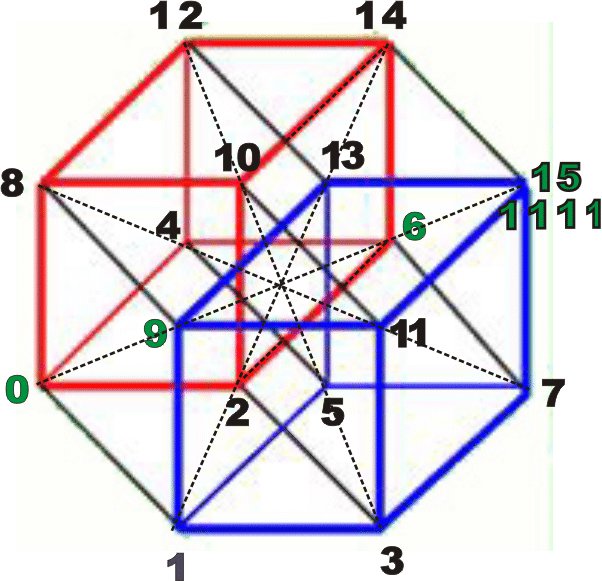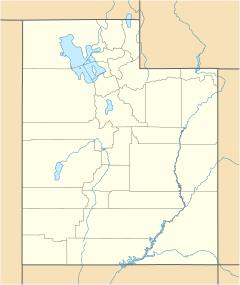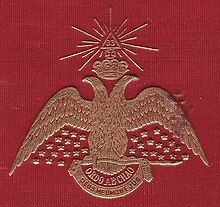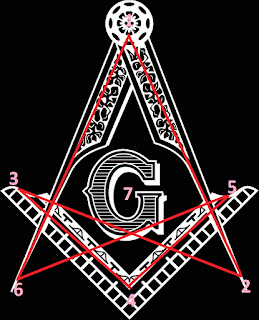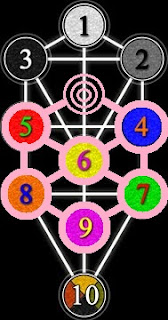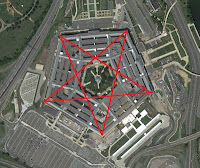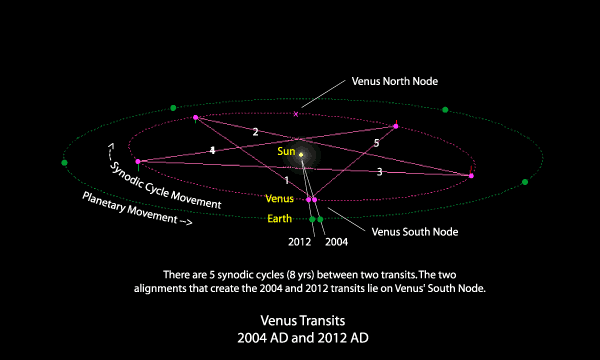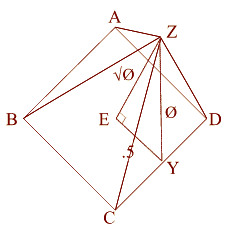|
|
General: FRANC MASONES=CONSTRUCTORES DE CATEDRALES EUROPEAS
إختار ملف آخر للرسائل |
|
جواب |
رسائل 1 من 24 في الفقرة |
|
www.catedralesgoticas.es/eni_mason.php
Historia de los masones durante la época de las construcciones de las grandes
... de piedra franca, o albañiles libertos más conocidos como francmasones.
es.wikipedia.org/wiki/Francmasonería
Muchos francmasones consideran que el símbolo GADU es igual al Dios ... Entre
los constructores de catedrales es muy significativo el caso de Sabine de ...
https://ar.answers.yahoo.com/question/index?qid...
Debido a su movimiento por toda Europa, lso francmasones fueron ... las
catedrales ni las Iglesias como antes y muchos de los "secretos" se ...
eduardocallaey.blogspot.com/.../los-constructores-de-catedrales.html
29 Feb 2012 ... El mundo que vio nacer a las primeras logias de masones libres estaba ... En las
catedrales que construían podían experimentar con tensiones y ..... Grand
Prieuré Indépendant de France - Grand Orient de France (GPIF) ...
enciclopedia.us.es/index.php/Francmasonería
25 Sep 2009 ... Históricamente, francmasones fueron denominados los constructores,
especialmente de catedrales góticas, durante la Edad Media. Si bien ...
|
|
|
|
www.youtube.com/watch?v=gLuyCtgewsw24 Jun. 2011 - 6 min. - Subido por MASONERIA VOCACIONADA
La francmasonería o masonería se define a sí misma como una institución discreta de carácter ... |
[PDF]
www.templodesalomon.com/index2.php?option=com...do...
Sobre catedrales, masones y secretos .... Consecuencia de ello era que los
francmasones no pudieran demostrar su pericia en forma constante y muchas
veces.
Su nombre real es Catedral del Rito Escocés de Indianápolis y, aunque lo
parezca, no es un templo religioso sino masónico. Fue construída entre 1927 y
1929 ...
|
|
|
|
جواب |
رسائل 10 من 24 في الفقرة |
|
Rockefeller Center: La Atlántida Global y sus símbolos

 El Rockefeller Center es uno de los lugares simbólicos más densos del planeta, aunque muy pocos entre sus millones de visitantes se paren a reflexionar sobre lo que significan estas imágenes. Se trata de una simbología relacionada con la historia reciente del capitalismo global, cuyas consecuencias estamos ahora sufriendo. El mito de la Atlántida, resurgida del océano para volver a desafiar a los dioses mediante la ilusión del conocimiento humano sin límites, el poder de la técnica y el dinero, y el individualismo como motor del mundo. El Rockefeller Center es uno de los lugares simbólicos más densos del planeta, aunque muy pocos entre sus millones de visitantes se paren a reflexionar sobre lo que significan estas imágenes. Se trata de una simbología relacionada con la historia reciente del capitalismo global, cuyas consecuencias estamos ahora sufriendo. El mito de la Atlántida, resurgida del océano para volver a desafiar a los dioses mediante la ilusión del conocimiento humano sin límites, el poder de la técnica y el dinero, y el individualismo como motor del mundo.

Es una simbología relacionada en parte con España. Según la mitología griega, Hércules en su viaje a la Península Ibérica se atrevió a robar la fruta sagrada que cuidaban las Hespérides, hijas de Atlas, fundador de la Atlántida, cumpliendo así la profecía sobre el fin de ese reino de titanes, como estaba anunciado. Este relieve del Museo de Olimpia muestra maravillosamente este episodio. Hércules sujeta el cosmos ayudado por la diosa Atenea, que le pone un almohadón en la espalda, mientras el mismo Átlas le trae las frutas de las Hespérides. Es una versión muy peculiar del mito, pues Átlas coopera en su propia destrucción, y sitúa en España, Hesperia, ese jardín prohibido.
Durante cincuenta años de su vida, el profesor Schulten efectuó investigaciones históricas y arqueológicas en la Península Ibérica en búsqueda de la Atlántida, y los últimos hallazgos parecen apoyar su hipótesis de que el reino andaluz de Tartessos, desaparecido en el siglo VI antes de Cristo, coincidía con la descripción que nos dejó Platón en el Timeo:
“(…) Sabios reyes habían formado en esta Atlántida una vasta y maravillosa potencia que dominaba toda aquella tierra además de otras muchas islas, y algunas comarcas del continente, apoderándose de todas, desde Libia al Egipto, y de Europa hasta Tirrenia (…) Empero sobrevinieron diluvios y terremotos, y en un solo día y en una sola noche fatal, todos aquellos guerreros fueron tragados por la tierra abierta. Desapareció la Atlántida y he aquí por qué aun hoy no se puede recorrer y explorar aquel mar, encontrando la navegación un escollo en el fangoso lodo que dejó la tierra al abismarse”.

El nombre del océano Atlántico viene de este supuesto reino hundido, que los cartógrafos del Renacimiento situaban entre América y Europa. Jacint Verdaguer en su famoso poemario La Atlántida, defiende que la búsqueda de ese mítico continente originó la aventura de Colón hacia el Atlántico e, indirectamente, el descubrimiento del Nuevo Mundo. Desde entonces, la Atlántida se asocia con América, y así lo describe el catalán José María Sert en los frescos de Titanes que pintó para decorar el vestíbulo principal del Rockefeller Center de Nueva York. Este mismo artista fue encargado por Manuel de Falla, para pintar los decorados de la cantata escenificada Atlántida, que aunque nunca llegó a estrenarse por culpa de la Guerra Civil, es la gran ópera española, escrita sobre todo en catalán, pues está inspirada en los poemas épicos de Verdaguer.

La Atlántida narra la lucha entre los dioses y los titanes hijos de Atlas, una lucha que recuerda bastante a la narración de la lucha entre los ángeles y los demonios, que fueron finalmente vencidos y arrojados al infierno. También la Atlántida fue destruida y hundida en el océano según los viejos mitos griegos. Por eso, el relato de la Atlántida, como el del Génesis sobre el Árbol del Conocimiento del Bien y del Mal en el Paraíso terrenal, simboliza la ambición sin límites del ser humano, y también del origen mismo de la civilización tal como hoy la conocemos, basada en el saber por experiencia, en la ciencia.

Todos los símbolos del Rockefeller Center siguen una estética griega que ha quedado un tanto adulterada para adaptarse al gusto popular del momento: El Art Decó, símbolo por excelencia del capitalismo americano. De hecho, este complejo de rascacielos y plazas fue construido entre 1930 y 1939 por John D. Rockefeller, Jr., al que debe su nombre, uno de los grandes magnates y pioneros de la economía de mercado actual. Se trata del primer conjunto urbanístico diseñado ex profeso en Manhattan, con diecinueve edificios que ocupan una superficie de 89,000 m2, entre las Avenidas Sexta y Quinta, y las calles 48 y 51, justo en frente de la catedral católica de Nueva York, la famosa San Patricio.El Atlas es la escultura más grande y, quizás, la más característica del complejo Rockefeller Center junto con la figura dorada de Prometeo y el Zodiaco, que está situada en la plaza interior, en frente del vestíbulo principal que decorara Sert.
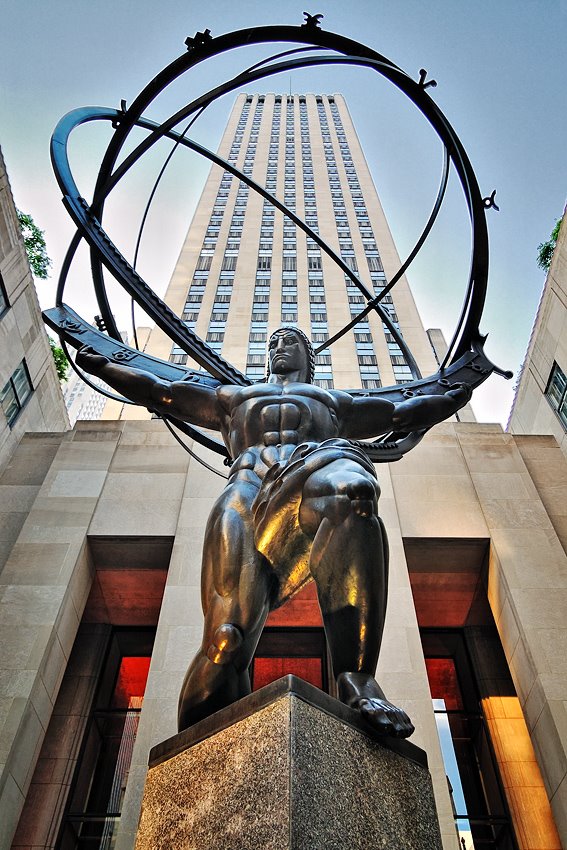
Atlas, según la mitología griega, fue condenado por Zeus a soportar sobre sus hombros los pilares que mantenían la tierra separada de los cielos. La escultura del Rockefeller Center en Nueva York fue realizada en 1936 por Lee Lawrie y Rene Chambellan. En ella, el eje norte-sur del gran orbe de bronce apunta a la Estrella Polar, y en uno de sus anillos se encuentran representadas las 12 constelaciones por las que pasa el Sol a lo largo de un año (visto desde la Tierra). Sobre los hombros de Atlas también puede observarse una especie de viga curvada con los símbolos tradicionales de Mercurio, Venus, Tierra, Marte, Júpiter, Saturno, y Neptuno.
|
|
|
|
جواب |
رسائل 11 من 24 في الفقرة |
|
Aparentemente, la misa catolica DISEÑADA EN FUNCION A VESICA PISCIS, observamos que LOS COMPONENTES DE LA EUCARISTIA CATOLICA, cuando el sacerdote la corta tienen la misma forma de la LUNA CUARTO MENGUANTE (8 DE AV=LETRA D) y LUNA CUARTO CRECIENTE (22 DE TISHRI). EN ese contexto la REFERENCIA A VESICA PISCIS EN EL CONTEXTO A LA SANTA CENA TIENE CONTEXTO CON ESTOS DOS DIAS DEL CALENDARIO HEBREO. Notamos que entre el 8 de AV y el 22 de TISHRI TENEMOS 73 DIAS. LO QUE ES CURIOSO ES QUE 73=36*2+1. Si sumamos 36 dias (NUMERO MUY KAVALISTICO QUE TIENE REFERENCIA A LOS 36 SABADOS LUNARES QUE TIENE LA GESTACION DE UN BEBE) llegamos al 14 de ELUL O EL 14/6 HEBREO y que desde el 15 de ELUL HASTA EL 22/7 volvemos a tener 36 dias. NOTAMOS QUE LA SANTA CENA DE LA SANTA MISA ESTA CENTRALIZADA EN EL MARCO AL 15/6 HEBREO, insisto, EN EL CONTEXTO AL NEXO DE VESICA PISCIS CON LAS FASES DE LA LUNA. SI VEMOS EL CALENDARIO GREGORIANO, AGOSTO ERA EL SEXTO MES, OSEA QUE LA REFERENCIA EN UN CONTEXTO GREGORIANO ESTA EN EL MARCO A LA ASUNCION DE LA VIRGEN. LLevandolo al CALENDARIO LUNI-SOLAR HEBREO este patron SE DIO EN EL AÑO 2004, adonde la LUNA LLENA (ROSH HASHANAH) fue el 6 de MARZO. ES CURIOSO QUE EN ESE AÑO EL 8 DE AV CAYO EN EL MISMO DIA DE LA INDEPENDENCIA ARGENTINA EN SAN MIGUEL DE TUCUMAN.
|
|
|
|
جواب |
رسائل 12 من 24 في الفقرة |
|

JESUCRISTO VIVIO JUSTO EN EL COMIENZO DE LA ERA DE PISCIS. OSEA QUE EL PADRE TODOPODEROSO PREDESTINO QUE EL SEÑOR TENIA QUE TENER SI O SI RELACION CON EL "AGUJERO DE GUSANO", INSISTO, EN EL MARCO A VESICA PISCIS. ESTE MONSTRUOSO NEXO EVIDENCIA LA RELACION CON MARIA MAGDALENA, YA QUE ASTRONOMICAMENTE CRISTO NO NACIO POR CASUALIDAD CERCA DEL AÑO 1. TODA LA REFERENCIA DE LA RESURRECCION DEL SEÑOR TIENE RELACION CON VIRGO, YA QUE ES UNA CONSTELACION ANTAGONICA A PISCIS. CUANDO EN EL 21/22 DE MARZO, OSEA EN EL EQUINOCCIO ESTA EN PISCIS, EL 21/22 DE SEPTIEMBRE (22/7=DIA DE MARIA LA MAGDALENA), EN EL CONTEXTO A QUE SEPTIEMBRE=SEPTIMO, EN EL ANTIGUO CALENDARIO TAMBIEN ERA SEPTIMO MES. EL MONSTRUOSO MACROCODIGO MATEMATICO DE VESICA PISCIS, COMO SE HA EXPUESTO EN ESTE FORO, TIENE UN FUERTE NEXO CIENTIFICO YA QUE TODO EL UNIVERSO, OSEA LA CREACION DIVINA TIENE CONNOTACION SEXUAL. LA ESTRELLA DE 6 PUNTAS, SALE DEL SIMBOLO DE VESICA PISCIS, QUE TAL CUAL LO AFIRMA EL CODIGO DA VINCI, TIENE CONNOTACION SEXUAL. VESICA PISCIS, ES UN AGUJERO DE GUSANO, PORQUE ESTA EN TODO EL ESPECTRO DEL CONOCIMIENTO CIENTIFICO, SOCIOLOGICO, ECONOMICO, ETC,ETC. CUANDO JESUCRISTO HACIA REFERENCIA AL "AGUA VIVA", NOS ESTABA HABLANDO DE FLUJO O DE ENERGIA. CON EL AGUA ESTANCADA NO SE PUEDE PRODUCIR ELECTRICIDAD EN CAMBIO CON AGUA EN MOVIMIENTO SI PORQUE TENEMOS ENERGIA CINETICA. SEGUN EL SEGUNDO PRINCIPIO DE LA TERMODINAMICA (DINA ES LA SEPTIMA HIJA DE JACOB=DAN=DENARIO =JUICIO=DAN BROWN =DINERO) TIENE QUE HABER DINAMICA DE FLUJO PARA QUE PUEDA HABER ENERGIA. ES OBVIA LA REFERENCIA O CONNOTACION SEXUAL DE LA MISMA.
68. Juan 4:10: Respondió Jesús y le dijo: Si conocieras el don de Dios, y quién es el que te dice: Dame de beber; tú le pedirías, y él te daría agua VIVA.
69. Juan 4:11: La mujer le dijo: Señor, no tienes con qué sacarla, y el pozo es hondo. ¿De dónde, pues, tienes el agua VIVA? (NOTEN EL NUMERO 69. ESE NUMERO ES EL 69 VERSICULO QUE APARECE "VIVA" EN LA BIBLIA)
70. Juan 7:38: El que cree en mí, como dice la Escritura, de su interior correrán ríos de agua VIVA.
LA CLAVE D-AV-ID / LL-AV-E / SH-AV-UOT / D-AV-INCI TIENE FUERTE NEXO CON LA ESTRELLA DE 6 PUNTAS, OSEA CON EL "AGUJERO DE GUSANO", OSEA LA ALQUIMIA. EL NEXO DE LA RESURRECCION DE CRISTO CON LA LEY DE LA RELATIVIDAD DE EINSTEIN EVIDENCIA LA RELACION EL NEXO DE LA MISMA CON EL "AGUJERO DE GUSANO". ESTA TODO CODIFICADO AMIGO. ESTO ES MONSTRUOSO. ES QUE TODO LO QUE USTED CONOCE TIENE ESTE PATRON. OSEA QUE DIOS TODOPODEROSO NO PREDESTINO LA RESURRECCION DE CRISTO FRENTE A MARIA MAGDALENA EN LA "ERA DE PISCIS" POR CASUALIDAD. ESTA TODO CALCULADO POR EL TODOPODEROSO. RECORDEMOS QUE EN EL CONTEXTO A LA "PRECESION DE LOS EQUINOCCIOS" APROXIMADAMENTE EN EL AÑO 4000 ANTES DE CRISTO COMENZO LA "ERA DE TAURO", EN EL 2000 A.C LA "ERA DE ARIES", CERCA DEL AÑO 1 LA "ERA DE PISCIS" Y ESTAMOS PROXIMOS A QUE COMIENZE LA "ERA DE ACUARIO" SI ES QUE NO COMENZO. INSISTO PARA QUE QUEDE ESTO CLARO. VESICA PISCIS ES EL "AGUJERO DE GUSANO MUNDIAL" DE TODO LO QUE USTED CONOCE. ¿PORQUE JESUCRISTO RESUCITO EN LA ERA DE PISCIS? SAQUE SUS PROPIAS CONCLUCIONES.
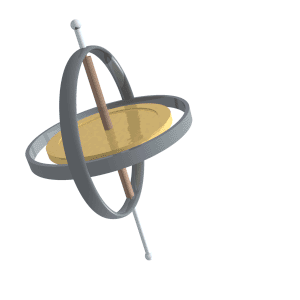

47 (CUARTO MANDAMIENTO CON REFERENCIA AL SEPTIMO DIA)
EL SIGNO $, EN EL CONTEXTO AL TABERNACULO SIMBOLIZA APARENTEMENTE EL MOVIMIENTO RELATIVO DEL SOL A LO LARGO DE LAS CONSTELACIONES QUE TIENE FORMA DE SERPIENTE. VEMOS QUE LA POSICION DE LA VIRGEN EN EL CENTRO ENTRE LAS DOS COLUMNAS TIENE ORIGEN CIENTIFICO YA QUE LA CURVA CRUZA EL ECUADOR EN PISCIS Y VIRGO.
   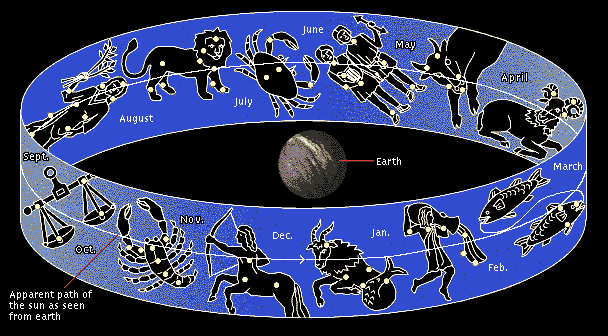
LA POSICION DE LA VIRGEN ESTA JUSTO EN EL CENTRO ENTRE LAS DOS COLUMNAS, OSEA ENTRE LOS DOS TROPICOS, CONCRETAMENTE EN EL ECUADOR. EL NEXO DE LA VIRGEN, EN CONTEXTO A LAS FESTIVIDADES HEBREAS, ES CON REFERENCIA AL 21 DE MARZO Y 21 DE SEPTIEMBRE, OSEA CUANDO EL SOL ESTA EN FRENTE DEL ECUADOR. EN LA ERA DE PISCIS (ERA CRISTIANA) EL 21/22 DE MARZO Y EL 21/22 DE SEPTIEMBRE CAE JUSTAMENTE EN PISCIS Y VIRGO. CONCRETAMENTE LA VIRGEN AL ESTAR UBICADA EN FORMA RELATIVA A LAS DOS COLUMNAS, INSISTO QUE SIMBOLIZAN LOS TROPICOS, JUSTAMENTE EN EL CENTRO QUE ES EN EL ECUADOR ES UNA OBVIA REFERENCIA AL 21/22 DE MARZO CUANDO RESUCITA EL SOL EN EL EQUINOCCIO (12 HORAS DE DIA Y 12 HORAS DE NOCHE). ¿QUE LE QUIERO DECIR CON ESTO? QUE LA VIRGEN QUE ESTA EN EL CENTRO ES MARIA LA MAGDALENA PORQUE FUE JUSTAMENTE ELLA LA QUE ESTUVO CUANDO NUESTRO SEÑOR RESUCITO (JUAN 20). CIENTIFICAMENTE ESE ES EL MENSAJE DETRAS DEL CRUCE EN EL ECUADOR DEL SOL EN LAS CONSTELACIONES DE PISCIS Y VIRGO. JUSTAMENTE PISCIS (DOS PECES) ES UNA REFERENCIA ESOTERICA A JESUCRISTO Y MARIA LA MAGDALENA. ¿MANEJAN LOS SUPER TEOLOGOS DE LA IGLESIA CATOLICA PREMISAS DEL GRIAL?
24. Mateo 14:19: Entonces mandóa la gente recostarse sobre la hierba; y tomando los cinco panes y los dos PECES, y levantando los ojos al cielo, bendijo, y partió y dio los panes a los discípulos, y los discípulos a la multitud.
26. Marcos 6:38: El les dijo: ¿Cuántos panes tenéis? Id y vedlo. Y al saberlo, dijeron: Cinco, y dos PECES.
27. Marcos 6:41: Entonces tomó los cinco panes y los dos PECES, y levantando los ojos al cielo, bendijo, y partió los panes, y dio a sus discípulos para que los pusiesen delante; y repartió los dos PECES entre todos.
31. Juan 21:6: El les dijo: Echad la red a la derecha de la barca, y hallaréis. Entonces la echaron, y ya no la podían sacar, por la gran cantidad de PECES.
32. Juan 21:8: Y los otros discípulos vinieron con la barca, arrastrando la red de PECES, pues no distaban de tierra sino como doscientos codos.
33. Juan 21:10: Jesús les dijo: Traed de los PECES que acabáis de pescar.
34. Juan 21:11: Subió Simón Pedro, y sacó la red a tierra, llena de grandes PECES, ciento cincuenta y tres; y aun siendo tantos, la red no se rompió.
|
|
|
|
|
جواب |
رسائل 13 من 24 في الفقرة |
|
Cathedral of the Madeleine
From Wikipedia, the free encyclopedia
The Cathedral of the Madeleine is a Roman Catholic church in Salt Lake City, Utah, United States. It was completed in 1909 and currently serves as the cathedral, or mother church, of the Diocese of Salt Lake City. It is the only cathedral in the US under the patronage of St. Mary Magdalene.
The cathedral was built under the direction of Lawrence Scanlan, the first bishop of Salt Lake. It was designed by architects Carl M. Neuhausen and Bernard O. Mecklenburg. The outside is predominantly a Neo-Romanesque design, while the inside tends more toward the Neo-Gothic. Construction began in 1900 and was completed in 1909. It was dedicated by Cardinal Archbishop James Gibbons of Baltimore.
The interior of the cathedral was created under the direction of Joseph S. Glass, the second bishop of Salt Lake. Bishop Glass enlisted John Theodore Comes, one of the preeminent architects in the country, to decorate the interior of the cathedral. His plans for the interior were largely based upon the Spanish Gothic style. The colorful murals and polychrome were added at this time, as were the ornate shrines.
In the 1970s, the exterior of the building was restored, and between 1991 and 1993, the interior of the Cathedral was renovated and restored under Bishop William K. Weigand. This included not only the removal of dust and dirt and restoration of the interior but also changes to the liturgical elements of the cathedral to bring them into conformity with certain widespread changes in liturgical practice that developed after the Second Vatican Council.
This included building a new altar, moving the bishop's chair, providing a separate chapel for the Blessed Sacrament, and adding a more ample baptismal font. The major restoration of the interior of the cathedral was accomplished through the vision of Monsignor M. Francis Mannion.[2]
The Cathedral is home to the only co-educational Catholic Choir School in the United States. The Madeleine Choir School, established in 1996, now serves over 350 students in Pre-Kindergarten through Grade Eight.
Composer Amédée Tremblay notably served as the church's organist from 1920 to 1925.[3]
Gallery[edit]
-
Interior of the cathedral
-
-
Cathedral of the Madeleine, as seen from behind, facing east
|
|
|
|
|
جواب |
رسائل 14 من 24 في الفقرة |
|
|
EL MISMO PATRON DEL TABERNACULO
|
|
|
|
|
جواب |
رسائل 15 من 24 في الفقرة |
|
LA MISMA CRUZ (EN SU MARCO CON LA INTERSECCION) TIENE RELACION CON EL "AGUJERO DE GUSANO". OSEA QUE EL NEXO DEL CAMINO DE SANTIAGO CON REFERENCIA A LA CRUZ DEL NORTE (CONSTELACION DEL CISNE) TIENE ESE MARCO. EN ESTE CONTEXTO LA MISMA INTERSECCION ES UNA REFERENCIA A CUANDO LA SERPIENTE SE MUERDE LA COLA, INSISTO, A VESICA PISCIS. EL MISMO SACRIFICIO DE CRISTO, EL 15 DE MARZO O 15/3 TIENE REFERENCIA A VESICA PISCIS (JUAN 21:11). TODO ESTO ESTA CODIFICADO EN LA SANTA MISA CATOLICA. CREALO PORQUE NO LE QUEDA OTRA. ES MAS, LA REFERENCIA DEL PORQUE LOS CATOLICOS SE PERSIGNAN, ES LA MISMA CONSTELACION DEL CISNE, OSEA LA CRUZ DEL NORTE, OSEA EL CAMINO DE SANTIAGO. TODA LA SIMBOLOGIA DEL DOLAR, OSEA LAS DOS COLUMNAS DE HERCULES EN EL CONTEXTO A LA SERPIENTE TIENE ESTE NEXO, OSEA EL "AGUJERO DE GUSANO", LA ESCALERA DE JACOB / SANTIAGO. EL AÑO 1999, TUVO LA MISMA SECUENCIA LUNAR QUE LA DEL SACRIFICIO DEL SEÑOR, EN EL AÑO 33 D.C. OSEA CON LUNA LLENA EL 2 DE MARZO. 14 DE NISSAN, EL 15 DE MARZO (VESICA PISCIS).
|
|
|
|
جواب |
رسائل 16 من 24 في الفقرة |
|
Trip to Italy and France
My wife, son, and I recently returned from a 3 week trip to Italy and France and we are continuing to digest the experience. International travel can shift one’s perspective and I no longer see myself or the familiar surroundings of home quite the same. It is much harder to articulate exactly what this shift consists of.
In Italy we first visited Venice and Bologna, then rented a car and explored the Umbrian towns of Perugia, Spello, Assisi, and Bevagna.
In Venice there must have been 20,000 people in St. Mark’s square on a rainy day! We were there right before Pascua and that is probably why there were so many Italian tourists in Venice. Here is a detail from Venice’s Church of the Maddalena (Magdaline).

The most notable feature is the portal, with masonic symbols over the door (probably connected to the Balbo’s membership in the Knights Templar). The interior has hexagonal plan with four side chapels and a presbytery. Source
Sapientia Aedificavit Sibi Domum is Latin for “Wisdom Has Built Her House.” So much praise for Mary Magdalene. This inscription suggests to me that she was the mother of the bloodline of Jesus rather than the prostitute the church fathers have traditionally made her out to be.
I analyzed the symbols over the door in AutoCAD and amazingly, the area of the triangle precisely equals the area of the circle. So instead of squaring the circle here we see an example of triangulating the circle.
Here is a astronomical clock in Piazza San Marco. There is another 24 hour clock on the other side of the Rialto bridge. See my Volume 2 film for deep connections to the 24 hour day. The Venetians must have understood that the position of the Sun signals more than the time of day. The Earth rotates through the changing influences of the zodiac and don’t forget the Moon’s position in the cycle is noted in the center. Interesting also that the singular massive billboard at the other end of the piazza is for a IWC Schaffhausen watch with a perpetual calendar that also tracks the lunar cycle.

Saturn is the god of time and the masks of Venice’s Saturnalia are world famous. Here I am trying on a Plague Doctor’s mask.

After spending a few days in the lovely medieval village of Bevagna, we drove through the countryside exploring Umbria and spent the night in Orvieto. Here is Orvieto’s most impressive Facade of God.

Northern Italy was to me surprisingly lush and densely populated. Italy has about twice as many people as live in all of the vastness of Canada!
I was amazed to see immense fields of solar panels along the highway. We saw this again in France along with large wind turbines.
We dropped off the car in Orvietto and took the high speed train to Rome. Traveling by train is fantastic, especially since so many high speed rail lines have gone in. Trains are much easier than flying and way more convenient. The train drops you off in the city center so you can sometimes walk to your destination whereas the airport must be placed a great distance away, usually necessitating a long taxi or bus ride. There is no security at train stations so the hassle factor is greatly reduced.
Rome was very crowded but I’m told it had nothing like the number of people present a few weeks earlier when the new Pope was selected. Here I am in front of St. Peter’s, standing on the Western wind rose marker. Papa Francesco didn’t come out to meet me.

In the porch of the Pantheon I saw this interesting symbol suggesting masonry or sacred geometry.

We flew from Rome to Marseilles, leaving behind the land of delicious pasta and pizza. In France we explored many medieval villages including Lourmarin, Bonnieux, Lacoste, Roussilon, Saignon, Apt, Rustrel, Goult, Menerbes, Senanque, Isle sur la Sorgue, Viens, Buoux, Simiane la Rotonde, and many other villages I forget the name of in the quiet and sparsely populated Luberon. We then drove west and stayed in the more populated Saint Remy de Provence, and explored Eygalieres, Uzes, the Pont du Gard, and Avignon. We took the TGV from Avignon to Paris and stayed in the City of Light for 5 days before returning to quiet Cortes Island, British Columbia, Canada where I live.
After reviewing the close to 3000 pictures we took on our trusty Canon point-and-shoot, I feel that digital photos don’t express emotional content very well. I have pioneered a technique that I discussed in one of my Photoshop User magazine articles (Sept 2012 issue) for turning photos into vibrant paintings. These digital “paintings” seem to me to be more emotive and alive as compared to photos.

The above image is of Glanum, the ruins of a Roman village near Saint Remy de Provence. The central part of the Roman town wasn’t discovered when Van Gogh painted these olive trees on site in 1889. The field where the olive trees were was excavated in 1921 and a forgotten town from 2000 years ago was rediscovered.

Olive Trees with the Alpilles in the Background by Van Gogh
Roman ruins are impressive. Stone is so permanent. Even today, most everything in Italy and France is made of stone or brick. I can’t emphasize enough how significant this is.

Gordes in the Vaucluse
Stone buildings with slate or tiled roofs last for hundreds if not thousands of years. Consequently the impression I get is that almost all of the housing is already existing. Therefore most of the construction effort in the built environment lays in restoration and renovation. Interiors can be redone and one can have a sleek modern interior inside a medieval stone shell. So people are largely freed up from having to each build their own house every generation like we seem to do in North America. Europeans seem to stay put also and live in the same place most of their lives, or at least that’s my impression. I have lived in almost 2 dozen houses in my life so far.
In Italy and France I had a palpable sense of permanence, continuity with the past, and how everything is already worked out by one’s forebears. This is a beautiful thing.
It was hard to find anything but Italian food in Italy and French food in France outside larger cities. I love both of these cuisines but after a while I was craving Indian, Thai, Japanese, Mexican, Vegan-Raw-Organic, just to name a few. Then it dawned on me that North America is a mashup, a hodgepodge, a mixed bag of many influences. Nothing is very permanent in the US and Canada. We seemingly have many more options but freedom can also be paralyzing. Without a traditional culture’s wisdom to follow, many are lost. But in that chaos there is also opportunity.
We had one of our most memorable dinners in Bonnieux, a village in the Luberon which was once a Templar stronghold. The L’Arome restaurant building dates from the 13th century, around the time the Templars discovered the Americas.

Adjacent to the restaurant is a bar with an highly interesting name. Google tells me le Terrail is the name of the marquisate that Bonnieux probably belonged to long ago.

The fact that the bar’s name is “33” is something that I took as a confirmation that I was recognizing another secret in plain sight. Why 33? It is a harmonic of the universe. Do the bar owners know this? Are the owners part of some kind of vast conspiracy going back at least to the Templars? 
It wasn’t open and I don’t speak French well enough to ask for anything more than a pain au chocolat anyway. And even then people don’t understand me. I have found the words “chocolate croissant” work much more effectively in France as you have to hit the French accent perfectly in order to be understood at all. My wife lived in France for a year and became fluent but still gets this treatment occasionally.
Incidentally Bonnieux’s neighboring village of Lacoste was the domain of the Marquis de Sade, and his chateau has fallen into as much ruin as his “sadistic” reputation. Lacoste is now primarily owned by French fashion designer Pierre Cardin, no connection to the fashion label Lacoste which was named after a French tennis player who invented the tennis or “polo” shirt. Here is the memorial to the Marquis de Sade next to his dungeons in Lacoste.

We went to the Abbaye Notre-Dame de Sénanque, a 12th century Cistercian monastery. On the tour of the abbey I was impressed by how beautiful the simple stonework is and how monks have lived in silence there for 850 years and amazingly a few still do.

We attended Vespers and were delighted to hear the monks sing gregorian chant, one of the only exceptions allowed in their vows of silence. Chanting really sacralizes the space and makes you feel the architecture and devotion to God like nothing else.
On a guided tour of monastery I came across this measuring instrument that reveals the units the Cistercians were using before the metric system. It says Coudée 52.36, Pied 32.36, Empan 20?, ?lme 12.56 [a 3 is written over the 5 as a correction so maybe this is supposed to be 12.36], and Paume 7.64. Is this the key to medieval measure? This will require further analysis.

To North American eyes, the cars in Europe are beyond tiny. In Bologna where we were staying with friends we crammed 5 people into a 1980’s Fiat 127, no problem other than the loading and unloading process which is similar to how it was in my well loved 1967 VW Beetle. Their Fiat has a 900cc engine, smaller than most larger motorcycle engines. But that’s nothing…they have 50cc cars in Italy! Yes you read that right, cars with tiny motorscooter engines are popular because they are exempt from requiring a license to drive (apparently this is a controversial law in Italy). Here is a 50cc car.

In France I saw Smart cars parked 90 degrees to how cars parallel park along the road; they just back into the curb and you 2 smart cars can fit in 1 normal parking space. Three wheeled motorscooters were popular in Paris having 2 front wheels in some kind of complicated steering linkage such that the scooter consequently doesn’t need a kickstand and presumably has better traction.
Everything in Europe is compact and efficient. For example, the roads in the Luberon are very narrow. What I would clearly call one single lane hosts 2-way traffic which can be nerve wracking.

The Luberon has 2nd gear and sometimes 3rd gear roads meaning they twist and they turn all the time. Everyone there seems to be part-time Formula 1 drivers and they push their cars to the limit. On Sundays dozens of motorcyclists show up racing their bikes for the pleasure of it.
The roads form a sort of neural network between villages so that every village is connected to all those villages surrounding them without having arterials nor freeways.
I really enjoyed feeling the connection with history and those who have come before. This is something that we have very little of in North America. It gives one perspective to consider the past.
|
|
|
|
جواب |
رسائل 17 من 24 في الفقرة |
|
Mysteries & Legends
Freemasons in Venice and the Church of Saint Mary Magdalene
Venice, an ever magic and mysterious city, was already in the 18th century the centre of an influential Freemasonry fraternity, whose members also included the famous adventurer Giacomo Casanova.
Here, the Freemasonry fraternity was so powerful and rich that they had a church built following the Freemasonry doctrines – the church of Saint Mary Magdalene in Cannaregio.
A few components of the Baffo family, affiliated to the Freemasonry in Venice, contracted the architect Tommaso Temanza, also a member of the fraternity, to build the ‘Freemasonry’ church. Temenza designed a perfectly round building with a neo classic style and a symbol of the Freemasonry etched on the architrave of the main door – an eye inscribed within a circle and a pyramid with the writing ‘SAPIENTIA EDIFICAVIT SIBI DOMUM’, a reference to the cult of the divine knowledge, which is at the base of the Freemason ideologies.
Temanza himself is buried inside the church and his headstone is decorated with a line and compasses, the most important symbol of the Freemasonry, as its members would define themselves as ‘builders’.
It is no surprise that this ‘Freemasonry’ church is dedicated to Mary Magdalene, a mysterious figure, sometimes rejected by the church, beloved instead by the Freemasonry and its members who considered her a symbol of wisdom and the struggle against the obscurantism of the church.
|
|
|
|
جواب |
رسائل 18 من 24 في الفقرة |
|

venetoinside.com
Not to be missed
220 × 249 - 12k - jpg |

secretsinplainsight.com
with masonic symbols over
555 × 399 - 61k - jpg |
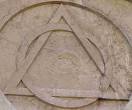
forum.andrewgough.co.uk
Saint Genevieve MO
538 × 450 - 12k - jpg |
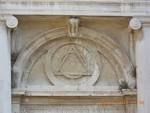
scottymuses.blogspot.com
in Venice: Cannaregio
1600 × 1200 - 133k - jpg |
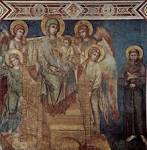
en.wikipedia.org
in the Lower Church of St
2024 × 2071 - 457k - jpg |

ginniehart.blogspot.com
St. Paulus Church (left),
1410 × 1600 - 607k - jpg |

slideshare.net
Mary, or of All Saints.
638 × 903 - 282k - jpg |

crystalinks.com
of the seminary of St.
555 × 368 - 55k - jpg |

forum.andrewgough.co.uk
Mary Magdalene, a character in
600 × 1040 - 685k - jpg |
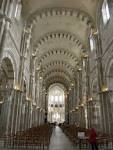
en.wikipedia.org
Abbey of St Mary Magdalene,
2448 × 3264 - 3093k - jpg |

slideshare.net
of Saint John.
638 × 903 - 351k - jpg |
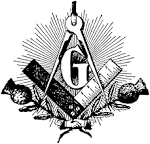
gabitos.com
http://freemasonry.bcy.ca/
1948 × 1867 - 79k - gif |

pinterest.com
Church of St. Mary Magdalene,
236 × 354 - 13k - jpg |

johnsanidopoulos.com
The Relics of Saint Athanasius
1600 × 1200 - 254k - jpg |

secretsinplainsight.com
Today using Google Earth I
1944 × 1112 - 1066k - jpg |
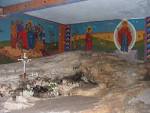
en.wikipedia.org
Church of St Stephen,
3072 × 2304 - 1502k - jpg |

en.wikipedia.org
Basilica of the Assumption of
2304 × 3525 - 2675k - jpg |

exurbe.com
Due to the popularity of
620 × 1075 - 193k - jpg |

cromleck-de-rennes.com
The Church of Rennes Le
552 × 326 - 89k - jpg |

en.wikipedia.org
Interior of the church
7998 × 5013 - 12266k - jpg |
|
|
|
|
جواب |
رسائل 19 من 24 في الفقرة |
|
|
|
|
جواب |
رسائل 20 من 24 في الفقرة |
|
COMPARE LA FLOR DE LIS CON EL AGUILA CON DOS CABEZAS
On the floor, in front of the Holy Sepulchre, is a mosaic figure of a double headed eagle - symbol of the Byzantine empire and the Greek Orthodox church.
Abbe Boudet talks about the Druids and the symbolism of the circle  A small circle surrounded by a larger circle the smaller circle relates to the created world the larger circle is the perfection of God the creator of Life 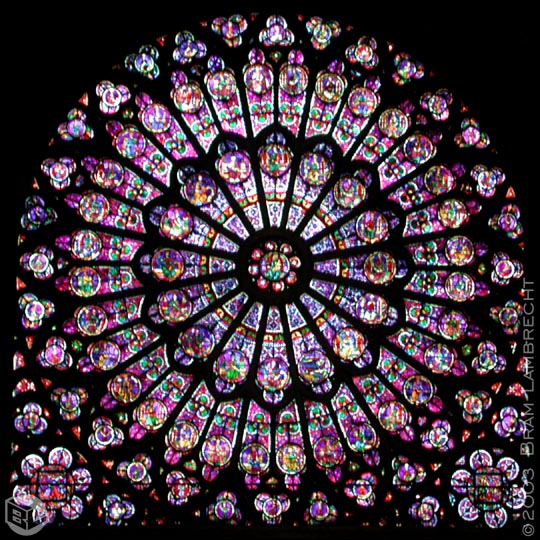 A rose window reflects this 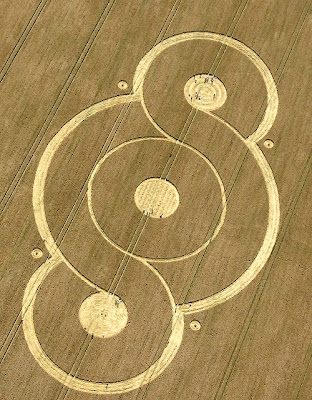 Crop Circle Formation At West Overton, near Lockeridge, Wiltshire. Reported on the 9th of August 2009 this pattern is seen at the Sistine chapel and at Church of the Holy Sepulchre |
|
|
|
جواب |
رسائل 21 من 24 في الفقرة |
|
Tommaso Temanza
From Wikipedia, the free encyclopedia
Tommaso Temanza (9 March 1705 – 14 June 1789) was an Italian architect and author of the Neoclassic period. Born in Venice, he was active both in his natal city and the mainland towns of the Republic of Venice.
Biography[edit]
His family held bureaucratic posts for the city of Venice. He studied in Padua with the mathematician and professor Giovanni Poleni. He apprenticed as an architect under his uncle, Giovanni Antonio Scalfarotto. He helped train Matteo Lucchesi, the uncle of Piranesi. One of his first jobs was as a proto or chief architecture for the Magistrate of the waterways, a position also held by Lucchesi. Among his works include the Church of Santa Margherita (circa 1748) in Padua, the private chapel in Villa Camerini located in Piazzola sul Brenta, and a loggia for Ca' Zenobio in Venice. His masterpieces are however for churches in Venice, including the cylindrical church of Santa Maria Maddalena (where his remains rest), the church of San Servolo and the chapel Sagredo in San Francesco della Vigna.
He is best known for his 1778 biography of architects from Venice: Vite dei più celebri architetti e scrittori veneziani.[1] In 1762, he also wrote a biography of Andrea Palladio (Vita di Andrea Palladio).[2]
Sources[edit]
| Persondata |
| Name |
Temanza, Tommaso |
| Alternative names |
|
| Short description |
Architect |
| Date of birth |
9 March 1705 |
| Place of birth |
Venice, Italy |
| Date of death |
14 June 1789 |
| Place of death |
|
 First First  Previous 2 to 2 of 2 Next Previous 2 to 2 of 2 Next  Last Last  |
|
|
Mysteries & Legends
Freemasons in Venice and the Church of Saint Mary Magdalene
Venice, an ever magic and mysterious city, was already in the 18th century the centre of an influential Freemasonry fraternity, whose members also included the famous adventurer Giacomo Casanova.
Here, the Freemasonry fraternity was so powerful and rich that they had a church built following the Freemasonry doctrines – the church of Saint Mary Magdalene in Cannaregio.
A few components of the Baffo family, affiliated to the Freemasonry in Venice, contracted the architect Tommaso Temanza, also a member of the fraternity, to build the ‘Freemasonry’ church. Temenza designed a perfectly round building with a neo classic style and a symbol of the Freemasonry etched on the architrave of the main door – an eye inscribed within a circle and a pyramid with the writing ‘SAPIENTIA EDIFICAVIT SIBI DOMUM’, a reference to the cult of the divine knowledge, which is at the base of the Freemason ideologies.
Temanza himself is buried inside the church and his headstone is decorated with a line and compasses, the most important symbol of the Freemasonry, as its members would define themselves as ‘builders’.
It is no surprise that this ‘Freemasonry’ church is dedicated to Mary Magdalene, a mysterious figure, sometimes rejected by the church, beloved instead by the Freemasonry and its members who considered her a symbol of wisdom and the struggle against the obscurantism of the church.
If the unusual places of Venice are the ones that interest you the most, contact us! We will create an unforgettable personalized tour in Venice just for you in collaboration with Francesca, the editor of this popular section.
|
|
|
|
|
|
جواب |
رسائل 22 من 24 في الفقرة |
|
'G', the letter of 'God', the 'Great Architect', the 'Geometer', for G is the 7th letter -
The Square and Compass is aligned horizontally to revere the direction in which the Sun as well as the 'Sun behind the Sun' - the Star of Set, or Sirius which is also included in the layout as the White House is not only at the left side of the Compass, but it is at the bottom of the averse pentagram aligned with the North.
The Star Sirius is a binary star, and the lesser star - Sirius B - is depicted as the smaller star to the bottom left; 'The Pentagon'. Even the hieroglyph of Sirius contains the predominant elements of the architecture;
 the Obelisk (Washington Monument), the 5 pointed star, and the Dome (The Capital Building). the Obelisk (Washington Monument), the 5 pointed star, and the Dome (The Capital Building).
11. Proverbios 25:11: MANZANA de oro con figuras de plata Es la palabra dicha como conviene.
PENSILVANIA / FILADELFIA (MANZANA DE ORO)
PEN=NUMERO CINCO
SILVANIA / SILVER / PLATA / ARGENTUM ("EXPERIMENTO FILADELFIA"= "AGUJERO DE GUSANO" ="MAQUINA DEL TIEMPO")
|
|
|
|
جواب |
رسائل 23 من 24 في الفقرة |
|
Roundway Hill, Nr Devizes, Wiltshire, United Kingdom. Reported 1st August. http://www.cropcircleconnector.com/2013 ... 2013a.htmlA connection to 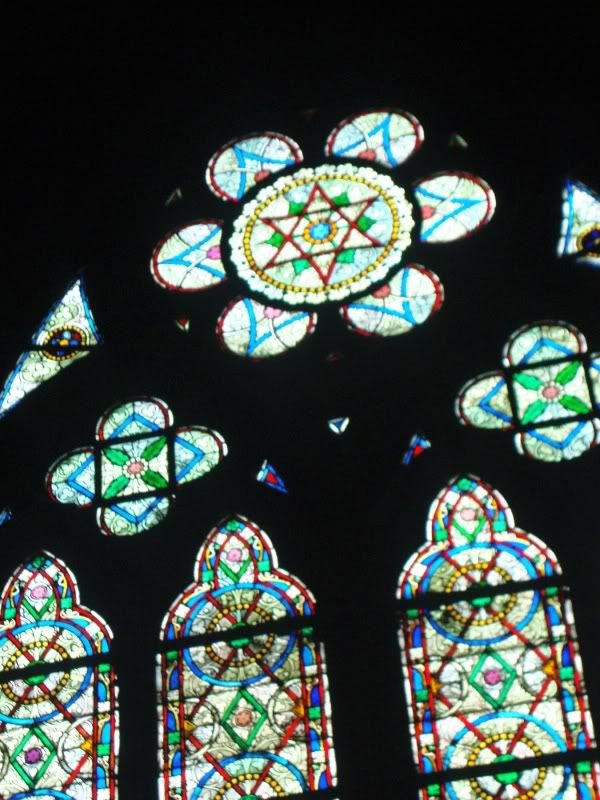 Gothic Cathedral in France dating back to the Crusades Magdalene was said to come from Migdal there is a rose petal flower used at Migdal where one of the oldest Synagogues has been found The symbol is likely to have been a part of a Jewish tradition dating to the Second Temple period. Also found in Pompeii http://bennerfarms.com/dutch/ Da Vinci
_________________
Everything is Connected and there are no
coincidences
|
|
|
|
جواب |
رسائل 24 من 24 في الفقرة |
|
For those who like church architecture .........  This is an arresting, and somewhat incongruous sight in the middle of the English countryside - the Church of St Mary, in the village of Itchen Stoke, near Winchester, Hampshire. 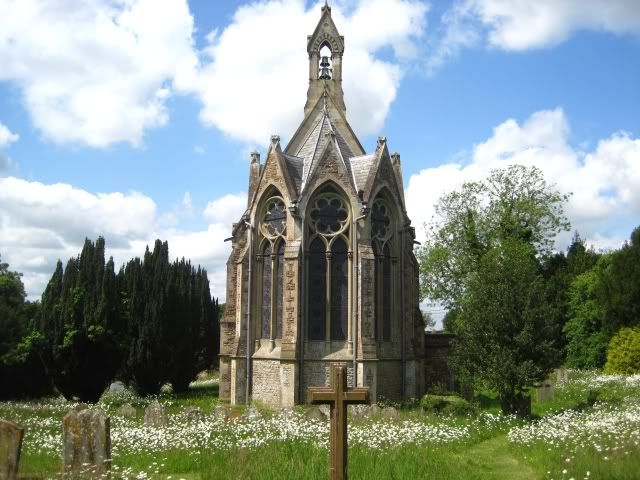 Built in the 1860s, during the reign of Queen Victoria, the architecture is clearly, and very deliberately inspired by the gothic medieval churches of northern France. St Mary's no longer functions as a church, but is looked after by the Churches Conservation Trust, and is open to the public. 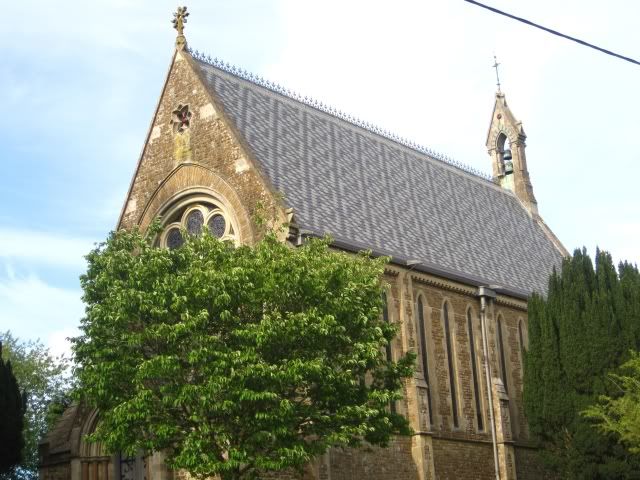 Itchen Stoke, which lies on the banks of the River Itchen, is a very old village, dating back to at least 960, when it was known as Ytinstoce. There was once a medieval church here, but it had fallen into such a state of disrepair by the nineteenth century, that a new church was built in 1830/31. This is one of two brasses in St Mary's, thought to date from c. 1500, which is all that remains of the old church. 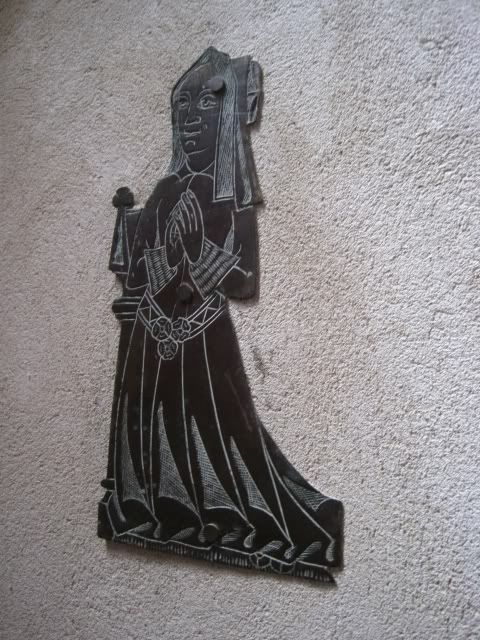 By the middle of the century, however, there was much interest in the Continental gothic style, and it was determined that a grander and more ornate church should be built in the village, and this led to the development of the St Mary's church that stands there today. The vicar at that time was the Reverend Charles Ranken Conybeare and he had good cause to be interested in architecture. His wife Elizabeth was the daughter of the antiquarian and writer on church architecture, James Haywood Markland, but even more significantly, the Reverend's brother Henry was a civil engineer and architect who, aside from designing Bombay's municipal waterworks, also designed the Afghan Church in that city, built to commemorate those who fell in the Afghan War of 1839-42. The Afghan Church, Bombay, Photo by "Nichalp", Wikipedia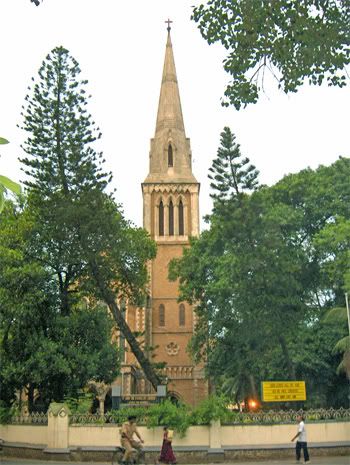 St Mary's in Hampshire was therefore the second church that he designed, and the building is great testament to his skill as an architect, and to the vision of his brother. Although not a literal copy of either church, the inspiration for St Mary's was chiefly Sainte Chapelle in Paris, and its successor chapel, built onto the east end of the abbey church of St Germer-de-Fly in Picardy. Other influences present in the church include the stained glass, which is said to be copied from designs in Le Mans and Auxerre, and the font, which was inspired by the tomb of Mary of Burgundy in the church of Our Lady at Bourges. There is also a Chartres inspired labyrinth on the floor by the altar. More on all of these below. The overall aesthetic is very much in the French medieval gothic tradition. Looking down the nave from the west entrance: 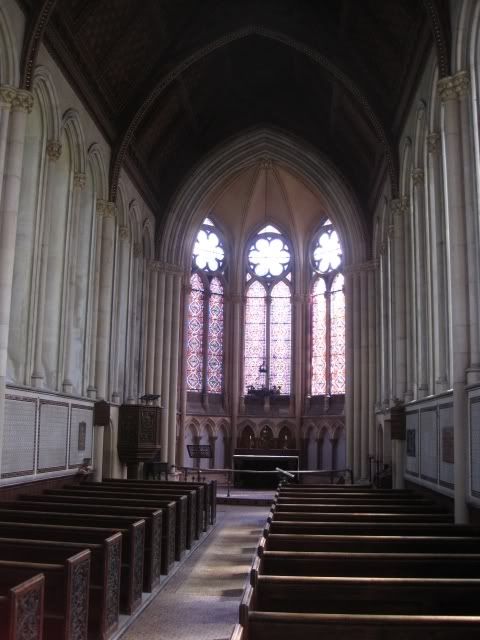 But aside from the lines and proportions of this very elegant structure, it also has much decoration and detailing of interest. The pattern of grey and green tiles on the roof, for example. 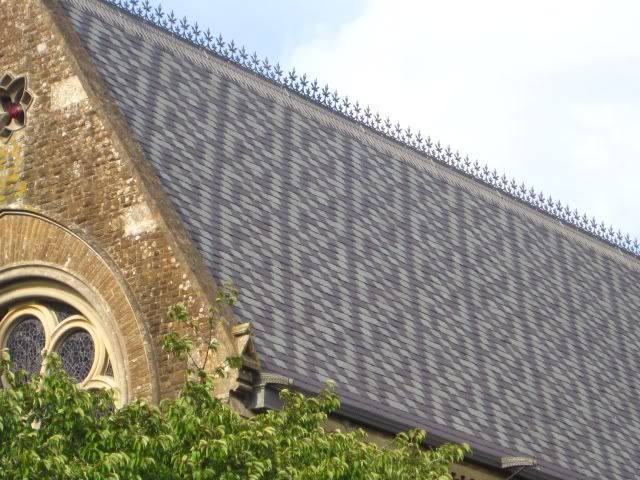 And this decorative tiling around the bell-cote.  The ceiling inside is decorated with five-petalled flowers. The immense height of this ceiling, within a long and narrow structure, is one of the most impressive features of the church when you stand there. 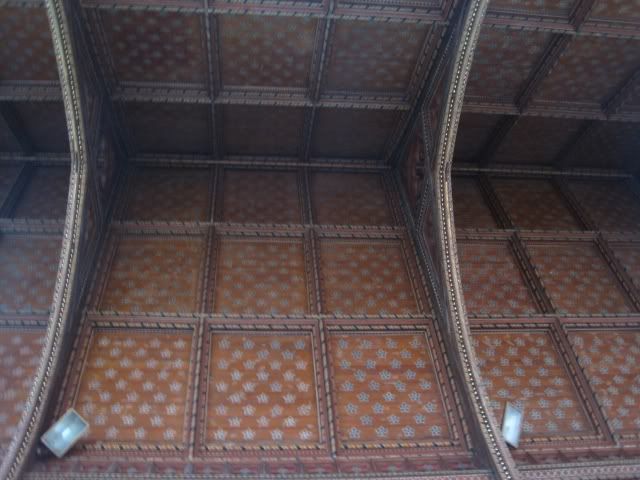 The stained glass is richly ornate, and it is thought that the absence of any depictions of saints or of biblical scenes is an indication of the Low Church leanings of Revd Conybeare. 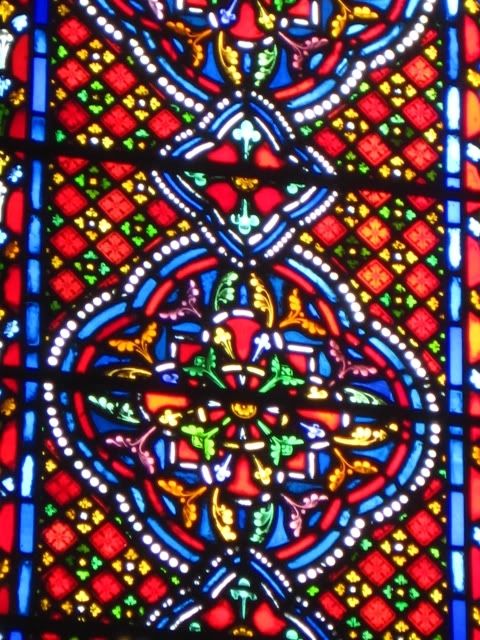 This eight-petal rose window is above the west entrance. 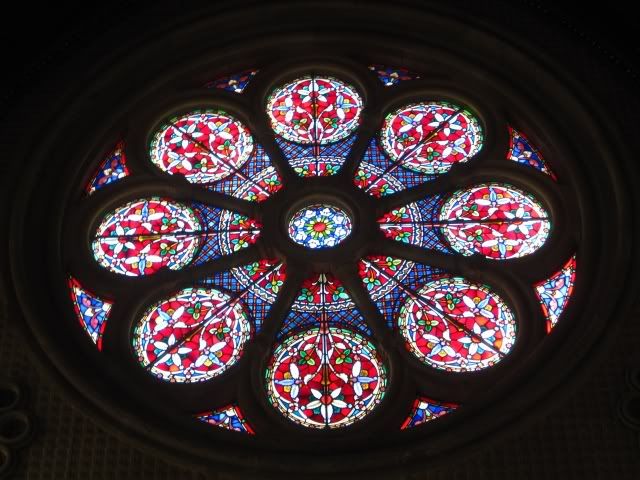 This is the floor around the altar. It depicts a labyrinth, inspired by the one at Chartres. 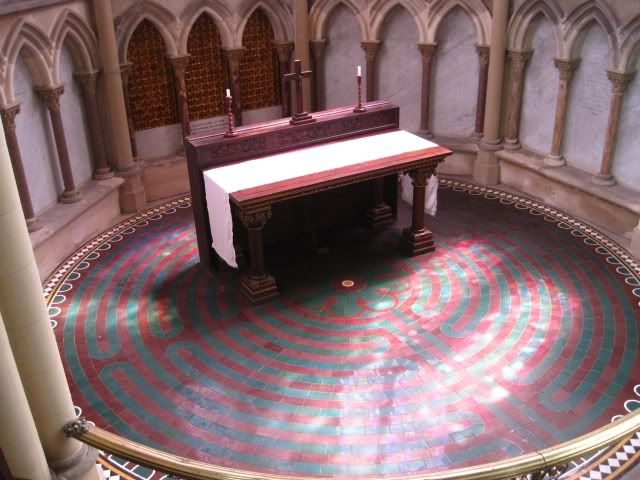 The font at the west end. The black marble base was donated by the architect in commemoration of his daughter Edith May, who sadly died in childhood. The main part is surrounded by columns of Californian marble, which was a new material in England at the time. 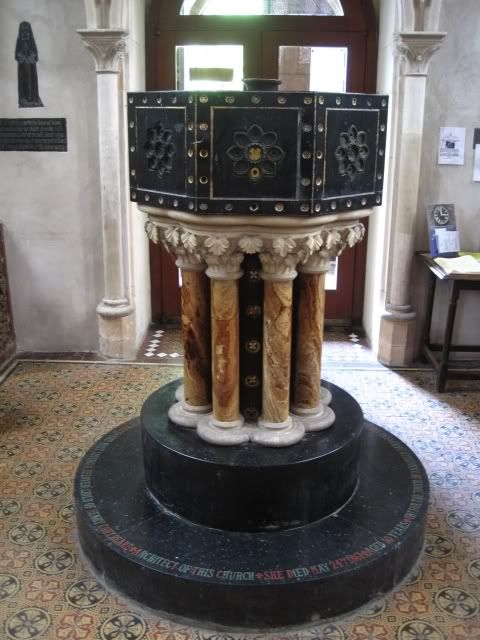 When the church was completed in 1867 it must have made for quite a sight, rising up out of the Hampshire meadows. It's impact was considerable, and it was the subject of a special feature in The Builder magazine the following year. It may no longer function as a church, but when you go there you appreciate the vision and enterprise of the Conybeare brothers for having left behind this beautiful and lovingly crafted construction. I am indebted to the architectural historian Geoff Brandwood, from whose superb pamphlet on the church much of the above information was obtained. This is a link to the Churches Conservation Trust who do such great work in preserving this church and others like it for the benefit of future generations. http://www.visitchurches.org.uk/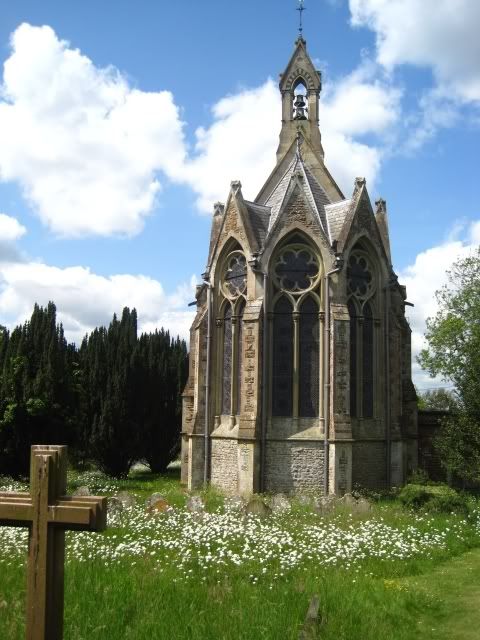
Richard's pictures of this church are great
It's a geometric dream church LOL
Ok it's design inspired by Chartres
twenty three in churches without including the many open-air labyrinths and mazes made of stones or cut into the turf of Ireland, Britain and Scandinavia. It is an extremely ancient device, as the story of the Cretan labyrinth shows. There was an Egyptian one at Hawara from about 1800 B.C., and if the idea hales from the Middle East it must be much older, for there is one at New Grange in Ireland dated seven centuries earlier.
Crop circle phenomenon and the ancient turf maze cult
Why Chartres? because Eleanor of Aquitaine was Blanche's Grandmother...the Plantagenets and Capetians are connected as well as the House of Castile whose heraldry is a Castle
The prelates of the Middle Ages placed them in prominent positions in their churches as testaments to their faith, but it took the eighteenth century to recognise their essentially pagan origins—for they destroyed many of them: at Reims, Sens, Arras, Auxerre and St. Omer, and in the next century at Amiens and Caen. The brass plaque in the centre of the Chartrain labyrinth was pulled up at the same time.
So there is a paganistic origin and so "dancing priests or "Druids" ....interlink
So these labyrinths are linked with the pagan stories ....so I hope this helps Father Silence
n the centre of the Chartres labyrinth there had once been fixed a bronze plaque—taken up and melted for cannon during the Revolution—on which was incised a most un-Christian tableau of Theseus killing the Minotaur with Ariadne holding the thread which was to show him the way home.[3] This motif was not unusual either—Amien's was called the House of Dedalus, while Lucca and Cremona both depicted Theseus in the centre and many of the others were popularly known as 'Dardale'.
so here it is folks
We must not forget that the clergy at Chartres were famous for their Platonic scholarship, and ranked, in the century before the cathedral was rebuilt, as the foremost centre in Europe for teaching these views. Their Way was the Gnostic one through knowledge rather than through faith. Their kindred order in the Moslem world, the Sufis, wrote
Beware
|
|
|
 أول أول
 سابق
10 a 24 de 24
لاحق سابق
10 a 24 de 24
لاحق
 آخر
آخر

|
|
| |
|
|
©2025 - Gabitos - كل الحقوق محفوظة | |
|
|

 El Rockefeller Center es uno de los lugares simbólicos más densos del planeta, aunque muy pocos entre sus millones de visitantes se paren a reflexionar sobre lo que significan estas imágenes. Se trata de una simbología relacionada con la historia reciente del capitalismo global, cuyas consecuencias estamos ahora sufriendo. El mito de la Atlántida, resurgida del océano para volver a desafiar a los dioses mediante la ilusión del conocimiento humano sin límites, el poder de la técnica y el dinero, y el individualismo como motor del mundo.
El Rockefeller Center es uno de los lugares simbólicos más densos del planeta, aunque muy pocos entre sus millones de visitantes se paren a reflexionar sobre lo que significan estas imágenes. Se trata de una simbología relacionada con la historia reciente del capitalismo global, cuyas consecuencias estamos ahora sufriendo. El mito de la Atlántida, resurgida del océano para volver a desafiar a los dioses mediante la ilusión del conocimiento humano sin límites, el poder de la técnica y el dinero, y el individualismo como motor del mundo.







